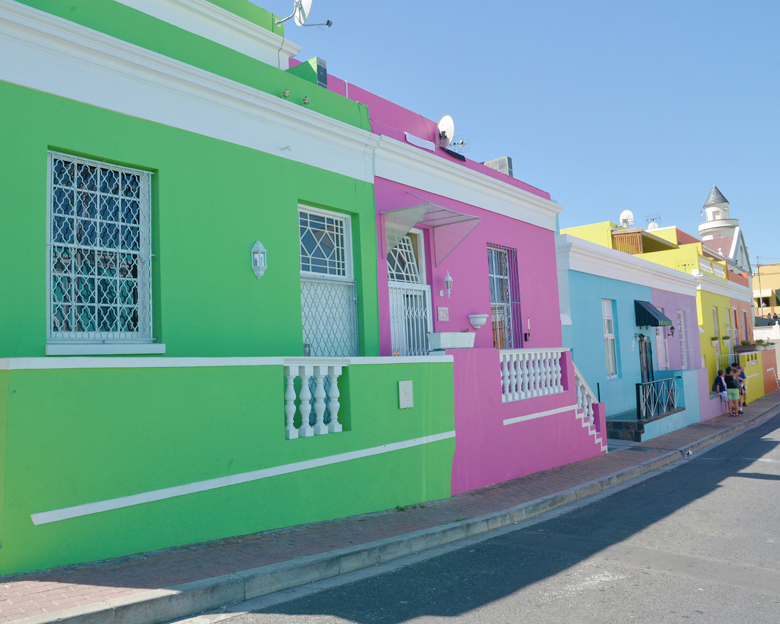Bo Kaap is a district of Cape Town ( South Africa ) formerly known as the Malay Quarter. The district is located between the city center and the slope of Signal Hill in the west of the Cape Town center, about a kilometer from Cape Town train station. The district of De Waterkant is to the north.
During the establishment of the Cape Colony in the 17th century, to alleviate the shortage of labor and avoid conflicts with local pastoral populations, the Dutch East India Company imported slaves from other regions of Africa but also from Asia, in particular from Ceylon, Malaysia and present-day Indonesia. After the abolition of slavery in 1834, the Cape Malays remained in Cape Town, mainly on the hillside of Signal Hill where they formed a community in its own right, mainly populated by workers and artisans.
Bo-Kaap is today one of the most picturesque districts of the Cape metropolis because of the persistence of numerous cobbled alleys, houses painted in pastel colors and mosques whose architecture recalls that of Asia of the South East. In May 2019, 19 sites in the Bo-Kaap area were declared National Heritage Sites by the South African Minister of Arts and Culture.
Access : Coordinates: -33.920833, 18.415278 / From the center of Cape Town to the area of Bo-Kaap about 10 minutes walk.
Highlights :
- Houses in Bo-Kaap : Bo-Kaap, with its brightly painted houses, mosques, Bo-Kaap Museum and cobblestone streets, is a tourist attraction. The M62 road runs through Bo-Kaap.
- Dorp Street in Bo-Kaap with Auwal Mosque – the oldest mosque in South Africa.The Bo-Kaap has 10 mosques of which the Auwal Mosque is according to tradition the first and also the oldest mosque in South Africa. Imam Abdullah Kadi Abdus Salaam, also known as Tuan Guru, was the first imam at the mosque. The Auwal mosque was established during the first British occupation of the Cape in 1798 and was the highest religious institution between 1804 and 1850. The Auwal mosque was a Shafi`i mosque and was founded according to the doctrines of Muslims of Indonesian origin.
- The district is characterized by narrow, steep streets and facades painted in different bright colors. The architectural style is a synthesis of Cape Dutch and Edwardian architecture.
- The Bo-Kaap Museum is a museum set in the 1760s, the oldest building in the region that still retains its original shape. This museum is a sign of the cultural influence of early Muslim migrants here, most of whom were tailors, carpenters, cobblers, and construction workers. The museum contains 19th-century furnishings such as a deciduous Cape leaf dining table, Cape Regency-type chairs and a bride booth used to customize the bride’s attire.
Activities : sightseeing / Photography, Architecture Photography
Go next : The Castle of Good Hope / Cape Peninsula / Boulders beach : A famous for its penguin colony and you can watch penguins in their natural habitat.

